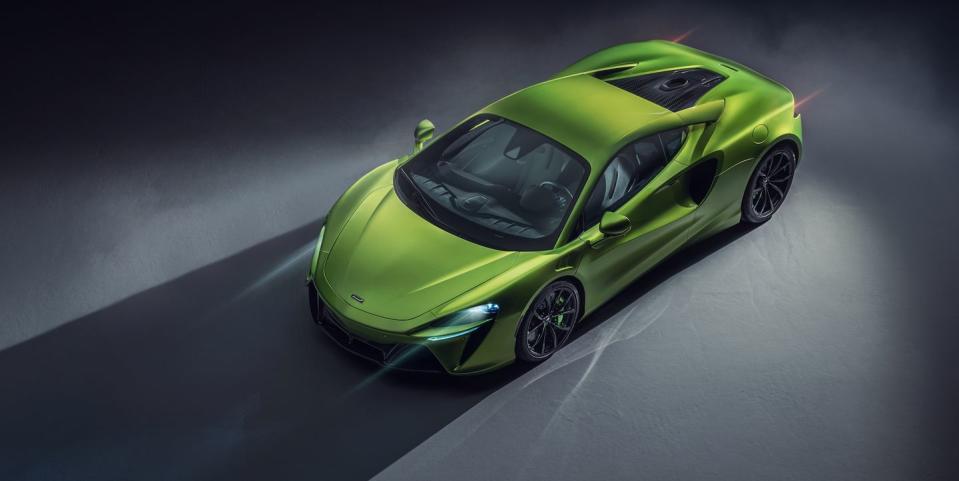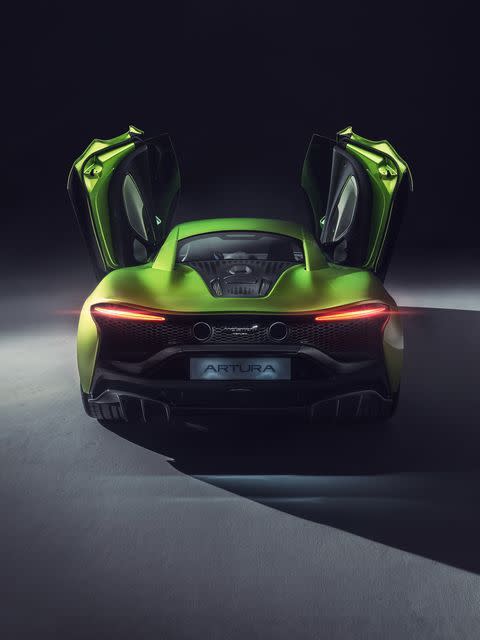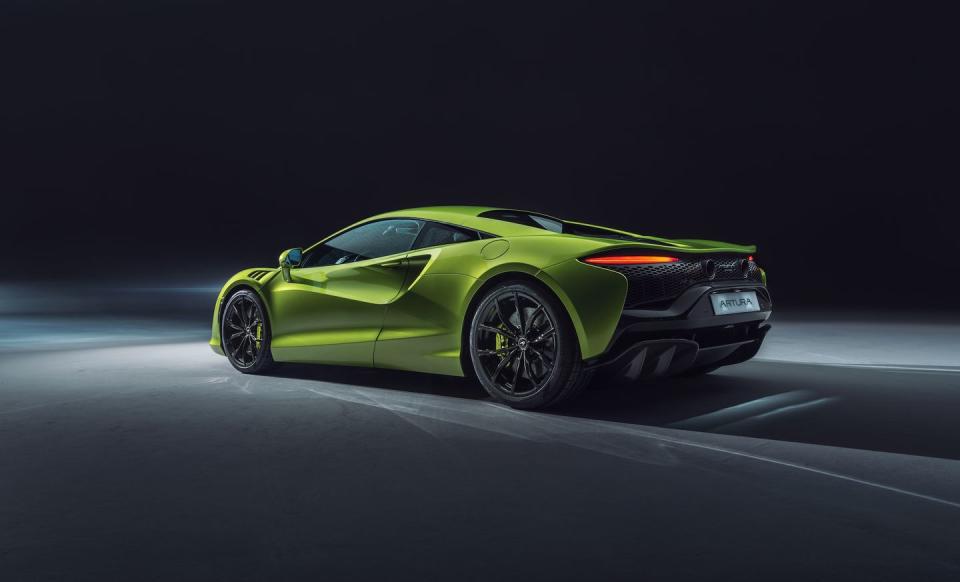The 2022 McLaren Artura Is the Lightweight Hybrid Supercar of the Future

The McLaren 570S is going away, and with it, the brand's Sport Series and alphanumeric naming scheme. This is the replacement, the Artura. It might look like an evolution of the 570S, but the Artura is all-new, and it's McLaren's first regular-production hybrid.
It's a big deal.
SIGN UP FOR OUR NEW WEEKLY EV NEWSLETTER, STATE OF CHARGE
The Artura is built around a new carbon-fiber chassis called the McLaren Lightweight Carbon Architecture (MCLA), and unlike with the brand's previous carbon monocoques, this one is built in-house. Bodywork is made from superformed aluminum and carbon-fiber, and all of this contributes to a 3303 curb weight, which makes the Artura lighter than the P1, and every other hybrid super/hypercar out there.

Power comes from a new 3.0-liter V-6—McLaren Automotive's first truly new engine since the 12C—with a unique 120-degree V-angle and turbos mounted in the valley between the cylinder banks. It makes 577 horsepower and 471 lb-ft of torque on its own, but those outputs are bolstered by an electric motor mounted in the transmission bell housing offering 94 hp and 166 lb-ft. The E-Motor—which weighs just 34 lbs and offers greater power density than that of the P1—allows for what McLaren calls for torque infill, compensation for turbo lag. Total system output is 671 horsepower and 531 lb-ft, all of which is routed to the rear wheels only through a new eight-speed dual-clutch gearbox. (And if that torque figure seems wonky to you given that 471 plus 166 equals 637, the engine and the motor make peak torque at different speeds.) The engine makes peak power at 7500 rpm and revs to 8500 rpm. A 7.4-kWh battery pack gives the Artura a 19-mile electric range, and the car has no reverse gear—instead, it uses the E-Motor to back up.
Performance figures, as we've come to expect from McLaren, are wild. Zero to 60 mph takes 3.0 seconds, 0-124 mph in 8.3 seconds, a 10.7-second quarter-mile time, and a 205-mph top speed.

The car has aluminum subframes at either end, which act as both crash structures and as mounting points for a number of suspension components. As with all other McLarens, there are double wishbones at the front axle, but at the back is a new multi-link setup designed to decrease weight and increase rear toe stiffness and braking stability. Like the Sport Series cars it replaces, the Artura has conventional coil springs with anti-roll bars and adaptive dampers. (Super Series cars, like the 720S and 765LT use a hydraulically interlinked suspension system that does without coils and roll bars.) What's new for McLaren is an electronically locking rear differential. Previous McLaren cars (besides the F1) used an open differential and mimicked a limited-slip differential by braking individual wheels. Now, there's a proper locking differential, with different settings for each driver-selectable chassis mode. Standard tires are a new version of the Pirelli P Zero Corsa while the winter tire is a Sottozero. Wheels are staggered, with 19-inch alloys up front and 20-inch units out back. Brakes are similar to those used on the 600LT and 720S with carbon-ceramic rotors and aluminum calipers.

 Yahoo Autos
Yahoo Autos 